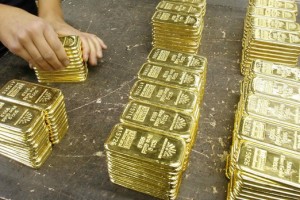Bank of Japan surprised investors with fresh monetary stimulus aimed at helping the economy, which continues to battle with rising sales tax in April. The news caused a significant movement in foreign exchange and capital markets, increasing again reverse correlation between the movement of the yen and that of Japanese shares. The central bank said it will expand its annual purchases of bonds to 80 trillion JPY (726 billion USD) per year. Before it was buying assets amounting to 60-70 trillion JPY. The institution will also increase its purchases of government debt by 30 trillion JPY and triple its stake in local exchange-traded funds and investment trusts in the field of real estate.
In its statement Bank of Japan present peaceful stance on monetary policy, saying it would continue measures for facilitating “in an open way”. However, the decision was not unanimous at all. Five members of the Council supported Bank of Japan new incentives, while the remaining four were against. The news came shortly after data showed that consumer inflation slowed further in September, raising skepticism about the ability of the central bank to achieve the desired expansion of the target level of 2%. In September core consumer prices rose by 1% annually, slowing acceleration from a rise of 1.1% in August.
Analysts note that the Central Bank should do more to prepare the economy for the second increase in the sales tax to 10 percent planned for next year. Levy on sales had increased to 8% from 5 percent in April, provoking a contraction of 7.1% targets on an annual basis in the second quarter.
In its recently published half-yearly Economic Outlook of the Bank of Japan lowered expectations for the expansion of gross domestic product by 0.5% for the financial year ending March 2015, compared to the previous forecast of 1%. The forecasts for the main indices of consumer prices, excluding the effects of the expansion of the sales tax was also reduced to 1.2% for the financial year 2014/2015 compared to the earlier target of 1.3 percent. For 2015/2016, the forecast does already for a level of 1.7% vs 1.9%.




